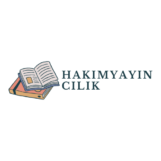I’ve discovered that keeping a creative writing journal is one of the most powerful tools for unlocking your imagination and developing your writing skills. It’s a personal space where ideas flow freely and stories come to life without judgment or restriction. As a writer myself I’ve found that regular journaling helps overcome writer’s block and nurtures creativity.
Starting a creative writing journal might seem daunting at first but it’s simpler than you think. Whether you prefer a traditional notebook or a digital platform the key is making it a dedicated space for your creative expression. I’ll show you how to transform blank pages into a playground for your thoughts stories and creative experiments that will help strengthen your writing muscles and develop your unique voice.
Key Takeaways
- A creative writing journal is a dedicated space for capturing original stories, poetry, character sketches, and writing experiments, serving as a sanctuary for unrestricted creative expression.
- Starting a journal requires choosing between traditional notebooks, digital platforms, or hybrid systems, along with essential supplies like writing tools, sticky notes, and organizational materials.
- Regular journaling practice strengthens writing skills through daily rituals, genre-specific prompts, and consistent writing schedules, helping writers develop their unique voice.
- Organizing your journal with color-coded sections, a table of contents, and clear indexing systems makes it easier to track progress and find specific content.
- Combat writer’s block through structured exercises like timed writing sessions, perspective switching, and sensory descriptions, while maintaining accountability with tracking methods.
Creative Writing Journal
A creative writing journal serves as a dedicated space for capturing original stories, poetry, character sketches, plot ideas, writing prompts, and personal reflections. I maintain my creative writing journal as a private sanctuary where words flow freely without judgment or external criticism.
Here’s what distinguishes a creative writing journal from standard journals:
- Contains fictional narratives instead of daily events
- Focuses on developing creative elements like dialogue, descriptions, and plots
- Includes experimental writing formats like poetry, flash fiction, and story fragments
- Stores inspiration sources such as images, quotes, and vocabulary lists
- Houses character profiles, world-building details, and story outlines
The key benefits of keeping a creative writing journal include:
- Strengthens writing muscles through consistent practice
- Preserves inspiring ideas before they fade from memory
- Creates a personal reference library of creative material
- Tracks growth and progress as a writer
- Provides a judgment-free space for experimentation
| Writing Journal Element | Purpose | Example |
|---|---|---|
| Writing Prompts | Spark creativity | “”Write about a door that leads somewhere unexpected”” |
| Character Sketches | Develop personalities | Physical traits, backstories, motivations |
| Plot Ideas | Structure stories | Story arcs, conflicts, resolutions |
| Vocabulary Lists | Enhance language | Thematic word collections, unique phrases |
| Research Notes | Build authenticity | Historical facts, scientific concepts |
I’ve found that maintaining a creative writing journal enhances productivity by establishing a consistent writing routine. The regular practice of documenting ideas, experimenting with different writing styles, and refining narrative techniques transforms scattered thoughts into polished pieces ready for broader audiences.
Setting Up Your Creative Writing Journal
A creative writing journal requires thoughtful preparation to create an effective writing environment. The setup process involves selecting an appropriate format and gathering essential materials to support regular writing practice.
Choosing the Right Journal Format
I recommend selecting from three primary journal formats based on specific writing needs:
- Traditional notebooks offer tactile engagement with spiral-bound or hardcover options
- Digital journals provide cloud backup features through apps like Evernote or Day One
- Hybrid systems combine physical writing with digital archiving capabilities
Key considerations for format selection include:
- Portability requirements for writing on-the-go
- Storage capacity for lengthy writing sessions
- Organizational features like tabs sections or searchability
- Budget constraints for initial setup costs
- Personal comfort with digital vs. analog writing
Essential Supplies and Materials
The fundamental supplies for a creative writing journal include:
Primary Tools:
- A main journal (minimum 100 pages)
- 2-3 reliable writing implements (pens gel pens pencils)
- Sticky notes in 3 different sizes
- Page markers in 5 distinct colors
Optional Enhancement Items:
- Washi tape for visual organization
- Highlighters for emphasis (3-5 colors)
- Index cards for plot mapping
- Folder attachments for research materials
Storage Components:
- Pencil case or supply holder
- Protective journal cover
- Backup storage solution (digital or physical)
- Portable writing surface for mobility
These materials create an organized system that supports sustained creative writing practice while maintaining flexibility for different writing styles preferences.
Creative Writing Journal Exercises and Prompts
Creative writing exercises transform blank journal pages into powerful tools for skill development. These structured activities enhance writing abilities through consistent practice patterns.
Daily Writing Rituals
I focus my daily writing practice on three core rituals that build momentum:
- Start each morning with a 15-minute free writing session about dreams events or random thoughts
- Set a dedicated writing time block (6 AM 12 PM or 8 PM) for uninterrupted creative flow
- Write 3 descriptive sentences about an observed object person or scene
- Track word count goals (500-1000 words) using journal entry timestamps
- Review yesterday’s entry to maintain narrative continuity
- Create a mind map of new story ideas or character connections
Writing Prompts for Different Genres
Each genre requires specific prompts to spark authentic storytelling:
Fantasy
- Design a unique magic system with 5 specific rules
- Create a mythical creature combining 3 existing animals
- Map an alternate world with distinct geographical features
Mystery
- Write a crime scene description using all 5 senses
- Develop 3 suspect profiles with conflicting alibis
- Plot a timeline of events leading to the central mystery
Romance
- Craft a meet-cute scenario in an unusual location
- Document 5 relationship milestones between characters
- Describe emotional reactions using physical sensations
Science Fiction
- Engineer a futuristic technology its benefits limitations
- Design an alien species culture social structure
- Create a post-apocalyptic survival guide
- Explore a character’s internal dialogue during a mundane task
- Write dialogue between 2 characters without using speech tags
- Describe a childhood memory from multiple perspectives
Making the Most of Your Journal Practice
A creative writing journal transforms into a powerful tool through consistent organization and deliberate practice. Here’s how to maximize its potential and establish sustainable writing habits.
Organization and Indexing Tips
I organize my creative writing journal using a combination of practical indexing methods:
- Create a table of contents at the front, updating it with page numbers for quick reference
- Use color-coded tabs to separate different writing categories: stories, character profiles, prompts
- Implement a bullet point system to mark completed drafts, work in progress, ideas
- Add monthly dividers to track writing progress chronologically
- Label story elements with specific tags: plot twists, dialogue snippets, world-building details
| Section Type | Color Code | Content Examples |
|---|---|---|
| Stories | Blue | Short stories, novellas |
| Characters | Green | Profiles, backstories |
| Ideas | Yellow | Plot concepts, themes |
| Research | Red | World details, facts |
- Write at the same time each day for 30 minutes
- Complete one writing prompt every morning before checking emails
- Track daily word count in a dedicated journal section
- Alternate between fiction genres to maintain creative flexibility
- Review previous entries weekly to identify patterns progress
| Writing Goal | Daily Target | Monthly Target |
|---|---|---|
| Word Count | 500 words | 15,000 words |
| Story Ideas | 1 concept | 30 concepts |
| Character Sketches | 1 profile | 15 profiles |
| Writing Prompts | 2 responses | 60 responses |
Overcoming Common Journaling Challenges
Creative writing journals present unique challenges that can impact productivity and creativity. I’ve identified effective strategies to address these common obstacles and maintain a productive writing practice.
Writer’s Block Solutions
I tackle writer’s block through structured writing prompts and timed exercises. Here are proven techniques to break through creative barriers:
- Start with 5-minute free writing sessions about random objects: door handles, coffee cups, street signs
- Switch writing perspectives between first person, third person, omniscient narrator
- Write dialogue between two contrasting characters: a optimist meeting a pessimist, a hero confronting a villain
- Create sensory descriptions of specific locations: busy train stations, quiet libraries, crowded markets
- Develop character backstories using “”what if”” scenarios: what if they lost their memory, what if they found a magic ring
- Set specific writing times: 6:00 AM morning sessions, lunch break writing sprints, evening reflection periods
- Track daily word counts: 500 words before breakfast, 15-minute timed sessions, 3 journal pages per day
- Create weekly themes: character development on Mondays, world-building on Wednesdays, dialogue practice on Fridays
- Use progress tracking methods: writing streak calendars, monthly word count graphs, completion checkboxes
- Schedule regular review sessions: weekly progress evaluations, monthly goal assessments, quarterly achievement analysis
| Writing Goal Type | Target | Tracking Method |
|---|---|---|
| Daily Words | 500-1000 | Word Counter |
| Weekly Sessions | 5-7 | Calendar Marks |
| Monthly Pages | 60-90 | Page Numbers |
| Writing Time | 30-60 min | Timer Log |
Using Your Journal to Improve Your Writing Craft
Character Development
- Record detailed character backstories with specific traits like a barista’s coffee-stained apron or a veteran’s distinctive limp
- Write dialogue exchanges between characters to develop unique voices
- Create character reaction sheets documenting responses to various scenarios
- Map character relationships using mind maps or family trees
Story Structure
- Draft multiple story openings to identify the most compelling hook
- Sketch plot outlines using the three-act structure framework
- Practice writing transitions between scenes
- Test different narrative perspectives (first person, third person limited, omniscient)
Description & Setting
- Write 100-word setting snapshots focusing on sensory details
- Create atmosphere descriptions using weather variations
- Practice writing the same scene at different times of day
- Document unique locations with specific architectural features
Literary Techniques
- Experiment with metaphors by describing emotions through physical sensations
- Practice showing vs telling through specific examples
- Create varied sentence structures to improve rhythm
- Test different narrative tenses in short passages
Language Development
| Focus Area | Exercise | Frequency |
|---|---|---|
| Vocabulary | List 5 new words | Daily |
| Syntax | Rewrite sentences | 3x weekly |
| Dialogue Tags | Practice alternatives | Weekly |
| Transitions | Bridge paragraphs | 2x weekly |
Scene Construction
- Write 15-minute flash scenes
- Practice opening hooks using different techniques
- Create tension through dialogue-only scenes
- Develop conflict through character interactions
- Imitate different authors’ styles
- Write the same scene in multiple genres
- Experiment with formal vs casual tones
- Develop unique narrative signatures through repetition exercises
Journal Notebook
A creative writing journal is more than just a notebook filled with words – it’s a powerful tool that can transform your writing journey. I’ve found that consistent journaling not only sharpens writing skills but also builds confidence and unleashes creativity in remarkable ways.
Starting your creative writing journal today opens doors to endless possibilities. Whether you choose a traditional notebook or digital platform the most important step is simply beginning. Remember that every published author started with a blank page and a willingness to write.
I encourage you to embrace this invaluable tool and make it uniquely yours. Your creative writing journal awaits – pick up that pen and let your imagination soar.

